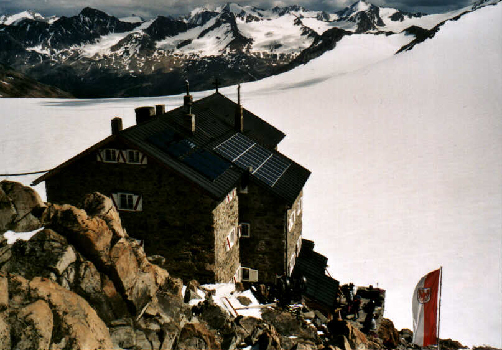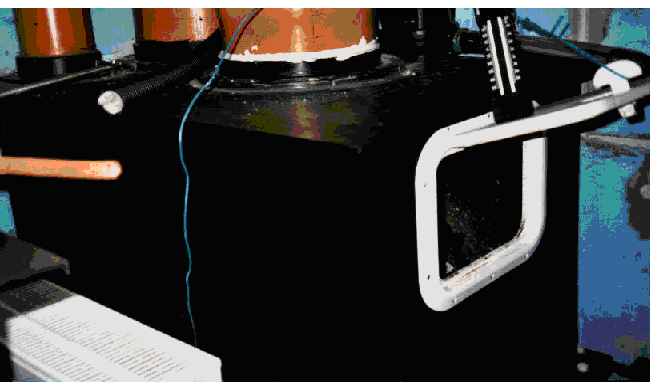environmental benefit of wastewater treatment plants in mountainous areas in the alps

|
Comparison of technology, costs and environmental benefit of wastewater treatment plants in mountainous areas in the alps |

|
Site description and boundary conditions
Design and treatment efficiency
maximum daily organic load [PE]
61
maximum hydraulic load [m3/d]
0.37
annual organic load [kg BOD/a]
90
altitude [m a.s.l.]
3274
sensitivity [hydrogeology, protected area ...]
granite
lagal requirements [BOD elimination]
40 %
operation period [season]
summer
energy supply [type, kW]
Aggregate
means of transport [type]
helicopter
existing WWTP [type, condition, volume l/PE]
no facilities

Fig. 4.4: View on the Brandenburg Refuge with a solar collector installed on the roof for hot water preperation and heated sludge composting.

Fig. 4.5: Compost chamber in a small incubated and heated room below the dry toilets.
Loading of biological treatment
WWTP Brandenburg Refuge seasonal average max. week max. day loading [PE60] 16 50 61 BOD5-load [kg/d] 1.0 3.0 3.66 influent flow Q [m3/d] 0.2 0.3 0.37
Design according to the F/M ratio in the max. week
Mtotal, stabilized = ca. 300 kg/a (composted sludge considering evaporation)
Energy demand
=> hot water heating system
Treatment efficiency
date [dd.mm.yyyy] dry matter
[weight %]organic content [weight %] temperature
[°C]loading
[% of PEmax]25.07.1999
63 89 40 -- 25.08.2000
51 79 -- 44 06.08.2001
31 - 35 71 - 81 43 31